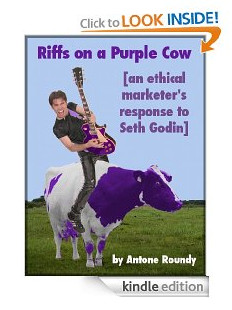When you purchase through links on our site, we may earn an affiliate commission (details)
The Importance of Price Anchoring
How important is it that your customers feel your price is fair?
It may seem like a no brainer, but consider this: have you ever paid more than you thought was fair for something? If you've eaten at an airport, bought popcorn at a movie theater, or gassed up a car lately, you've proven that "fair" prices aren't the only way to sell.
A "Fair" Price vs. the Product's Value
In fact, if you willingly parted with $5 for a bucket of popcorn that probably cost the theater 30¢, you can't really complain.
Yes, they're abusing their monopoly on movie-time snacks to make more than they could in a competitive marketplace. But nobody put a gun to your head and made you pay. You obviously decided that the product was worth the price, whether you thought it was "fair" or not.
(And if you're thinking you had to do it so your date wouldn't think you were a cheapskate...well, you still went willingly to the theater and willingly forked over the cash. It could even be argued that you got more out of the deal than just the popcorn, so you should be happy to pay more.)
Value vs. Expectations
Still, even if when it is possible to maximize your profits by charging higher prices, there will be people who opt out. If they're refusing to buy because the product really isn't worth that much to them, there's nothing ethical you can do to change their minds (without changing the actual value of the offer).
But if they're refusing to buy because you're asking more than they expect to pay for your kind of product (even though they value the product at or above your asking price), you've got some wiggle room.
Today on Neuromarketing, Roger Dooley wrote:
Assessing the value of a product has been shown to be a key part of the brain's process for making purchase decisions. Earlier fMRI work by researchers like CMU's George Loewenstein shows that prices that seem unfair cause a pain reaction in the brain.
I don't know whether Roger's first sentence was meant to refer to assessing the fairness of the price, or, as it's worded, the value of the product. But either way, you don't want your prospects to have a pain reaction when they see your price!
How do you avoid that if your price is higher than they expect to pay?
Price anchoring.
I wrote more extensively about price anchoring a few weeks ago. The point that Roger's article brought to mind today is that you need to set up the reference frame that prospects are going to use to assess the fairness of your price before showing them the price.
Waiting till after would be like a doctor giving his patient anesthesia after their surgery was over, and then trying to convince them that it hadn't ever hurt.
But Is It Ethical?
If movie theaters could successfully frame their popcorn's pricing in a way that removed the pain of comparing them to a $5 box of 25 microwave popcorn bags, would it be ethical for them to sell at that price?
That's a hard question for me to answer. At 20 to 25 times the price, it's a little too much of a stretch for me to be sure I'm giving this thought experiment fair consideration.
So let's concoct a different hypothetical world -- one where the $5 price is crossed out and replaced by $2. The crossed out price would remind me of what other theaters charge, shifting my focus partially away from the fact that it was still 10 times as expensive as self-popped popcorn.
At that point, I'd say yeah, that's ethical. Recognizing that $2 was somewhere between my two anchors -- $5 for theater popcorn vs. 20¢ for microwave popcorn -- I'd probably consider the popcorn on it's own merits and decide that it was worth $2 to me.
In this example, the theater would actually be using the pain associated with the $5 anchor to help it sell. You know the sales letter formula: promise, problem, agitate, solution (or something like that). The smell of the popcorn is the promise. The fact that I know theaters overcharge is the problem. $5 is the agitation. $2 is the solution. They're offering to remove my pain.
Of course, for this to work, their price has to be low enough to remove the pain. Which probably means it needs to be a "fair" price.




